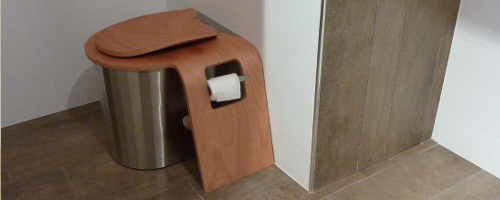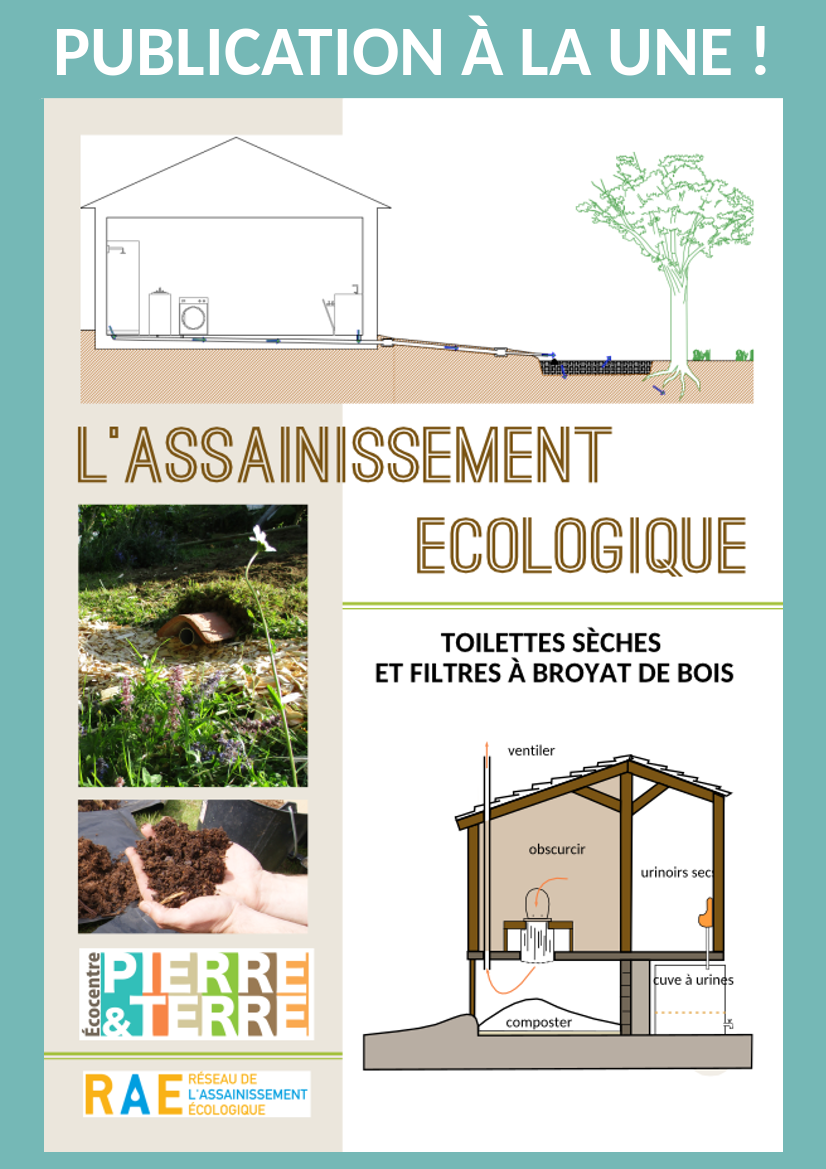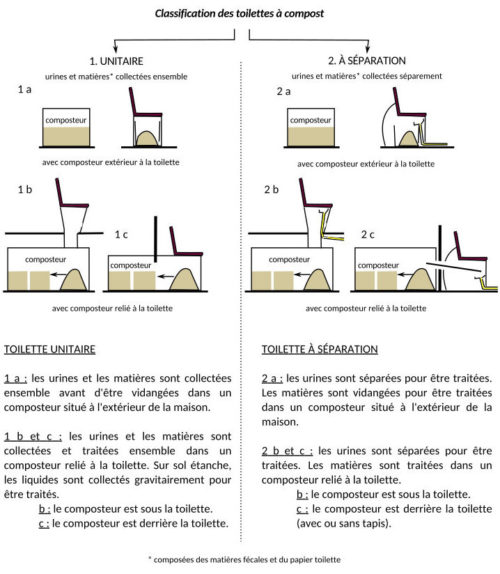Pierre & Terre association accompany you in your reflexion and your journey towards a more environmentally friendly lifestyle. It is in this context that we welcome you for a personalized appointment in our premises, to present the approach and challenges of dry toilets.

As their name implies, dry toilets function without water. They have many advantages, like stopping the high nitrate, phosphate and bacterial pollution linked to our faeces.
Dry toilets advantages
– By eliminating our faeces from the waterway, we reduce the azote and phosphate pollution in our rivers « and we stop almost all bacterial pollution » (D. Marchand, DRASS sanitary engineer). On the contrary, with wet toilets, this pollution remains existant to some extent, even after being treated and purified by sanitation systems, collective or not.
– The compost obtained by the use of dry toilets allows a nitrogen and phosphorus unit extraction, crucial for our agricultural autonomy. The main element of this technique consists in leading a cultural reflexion to be able to perceive our faeces like a biomass, full of nutritive elements that are needed for our soils balance, which must therefore be valorized.
– Stopping the use of water for the excrement evacuation allows a household to save 20% to 30% of water consumption per year.
Dry toilets classification
From a practical point of view, we identify two main types of dry toilets : dry toilets with separation of urine and faeces from the source and unitary dry toilets. The schema right below shows an exemple of a classification for composting toilets. Nowadays, dry toilets can be found through several variants : they can be installed outdoor but a growing number of these toilets are also being intgrated into buildings.
Composting rooms sizing
They vary according to the system that has been chosen. Their size will be defined by the autonomy of the dry toilets. When the composting room is placed under the toilets, their volume can go from 80L to multiple cubic meters. For a regular use of 4 people, the average dimensions of a composting room go from 1 to 2 cubic meters.

Composting rooms will have to be adjusted to their number of visitors. If the ground is flat or if the space is limited, the rooms can be wider, or not as high as usual.
Ventilation
It ensures a good odor control and guarantees a comfortable use of the dry toilet. The ventilation has to be placed in the composting area and not in the ceiling of the room where the toilets are located. Indispensable, it can be mechanical or passive. We recommend however that you install a mechanical ventilation for indoor separative dry toilets. The aspiration is made from inside the toilet and towards the composting room. An air intake will therefore be installed as close as possible to the toilet. It is also possible to pair air circulation systems (intake and extraction) with a double flow ventilation.
Lighting
Valid for every dry toilets system, it is not recommended to light them up with a ceiling lamp. We will prefer low lighting fixtures (between 50 to 60 cm).

















